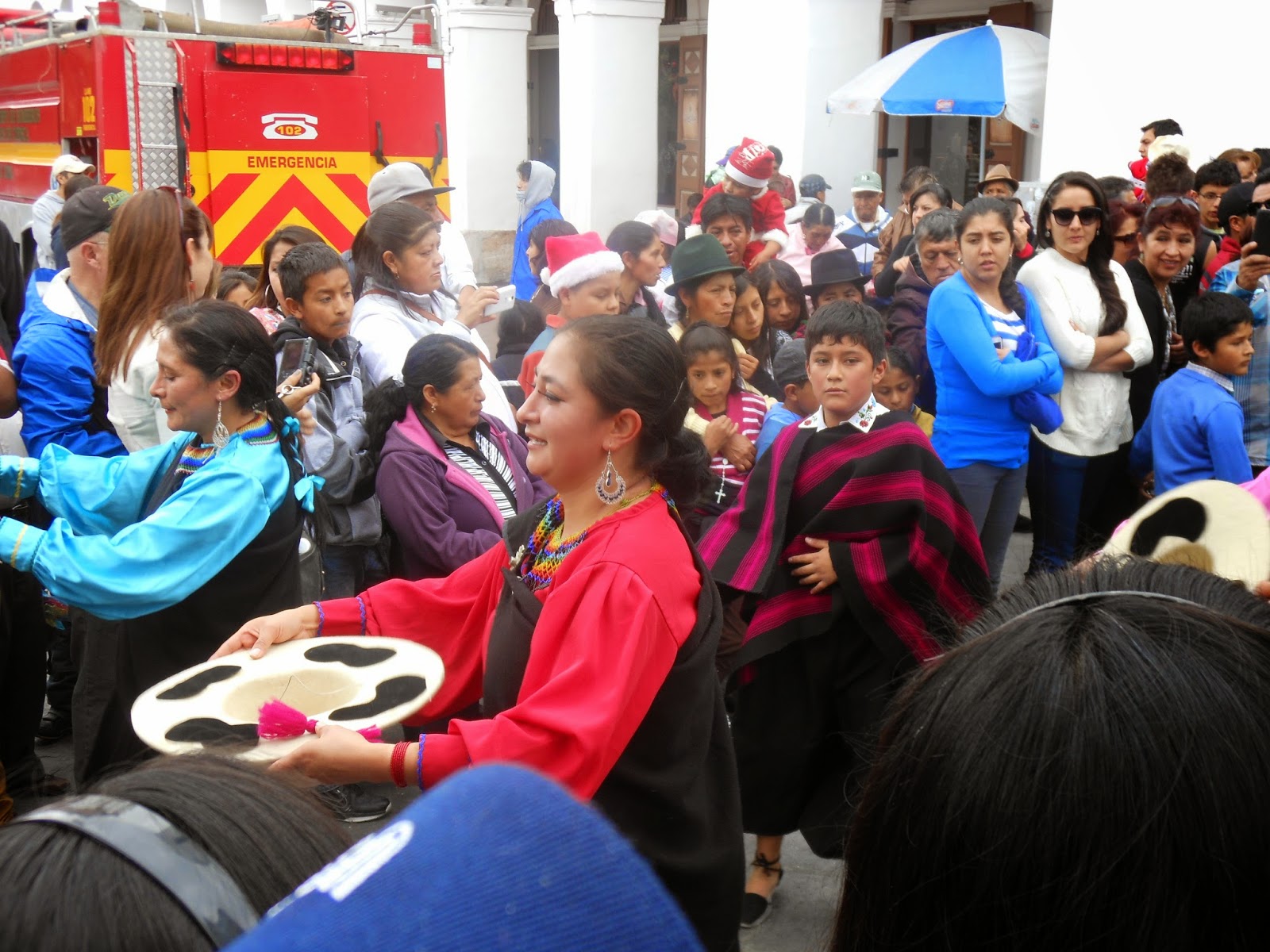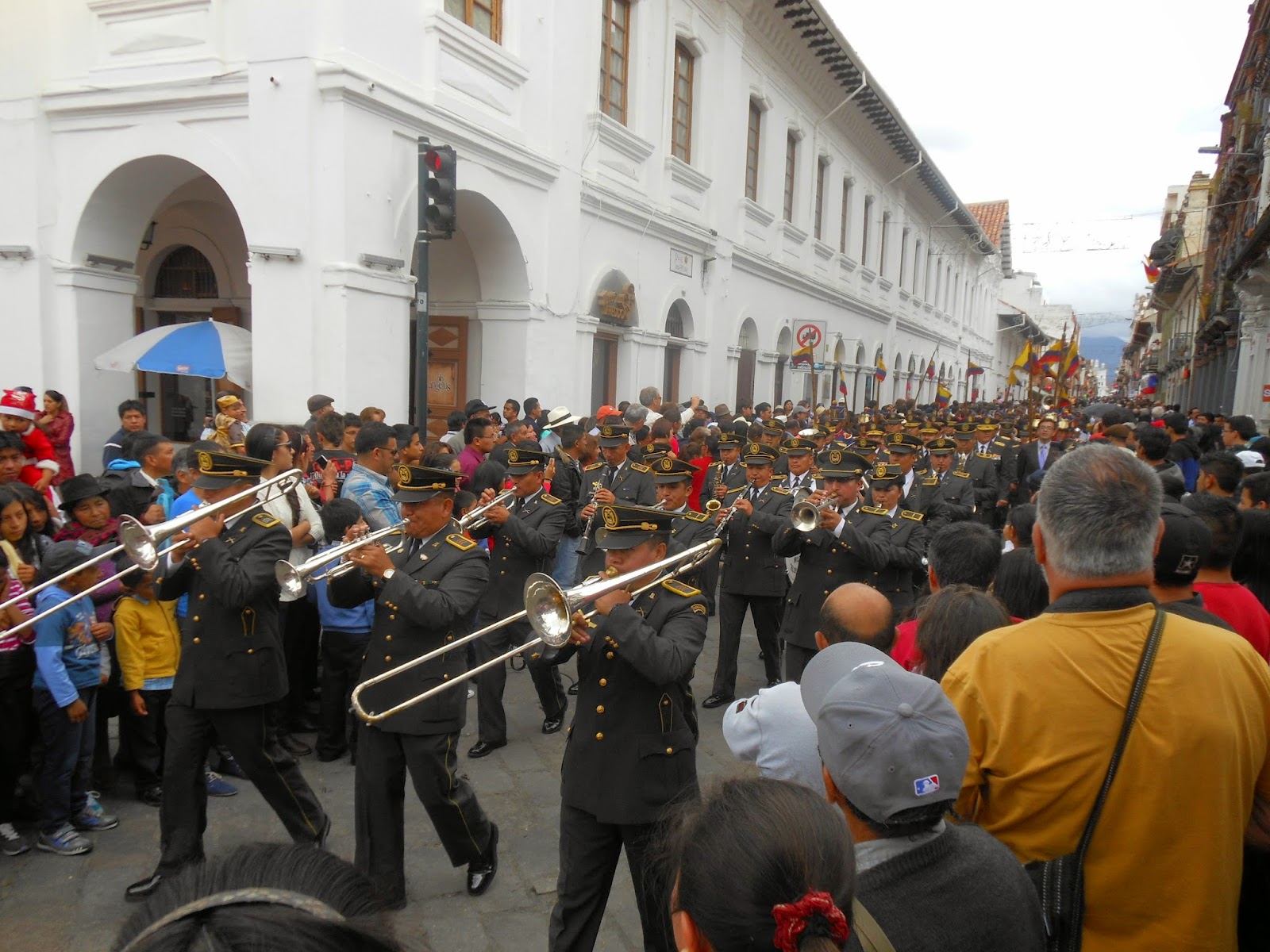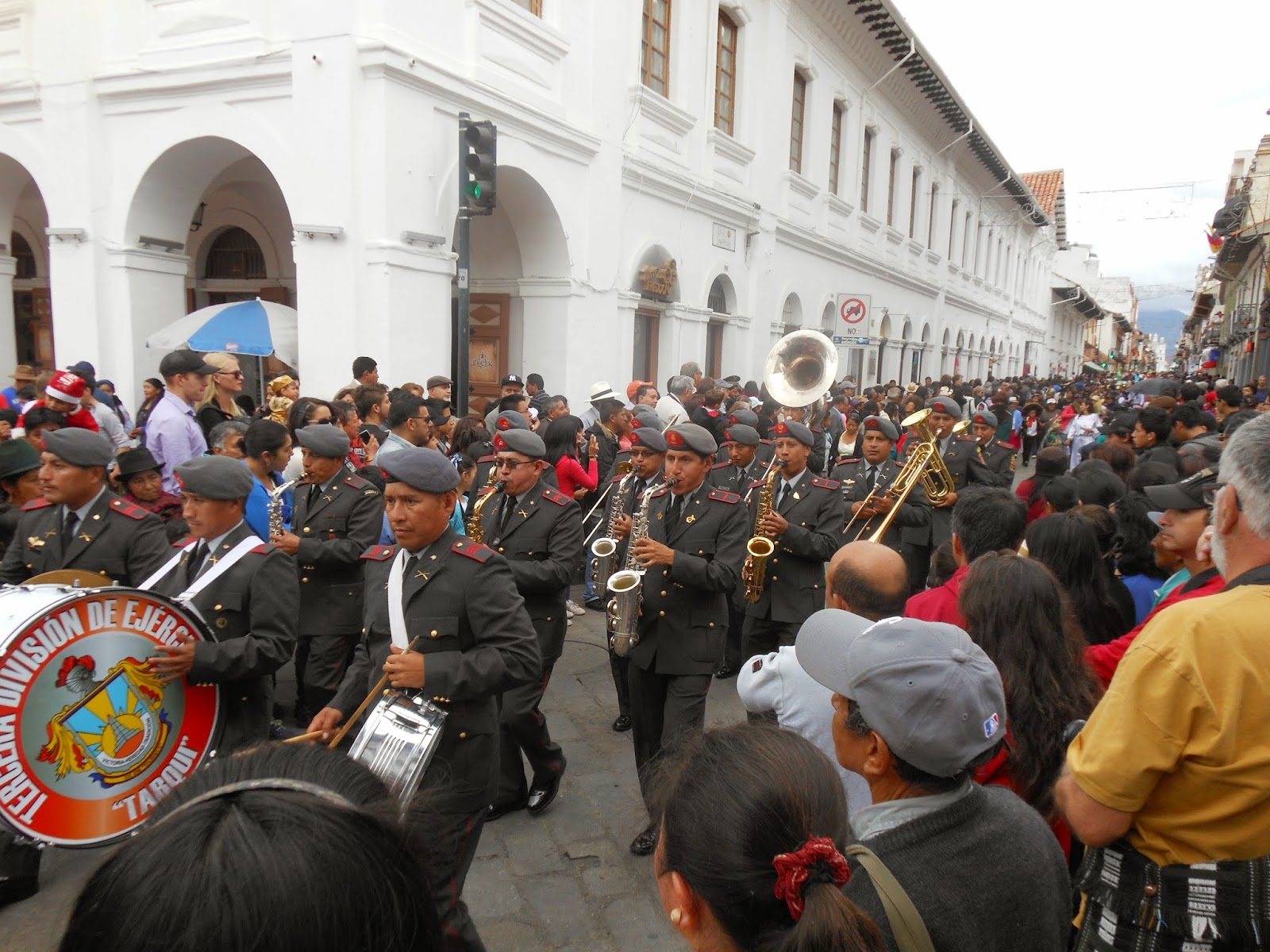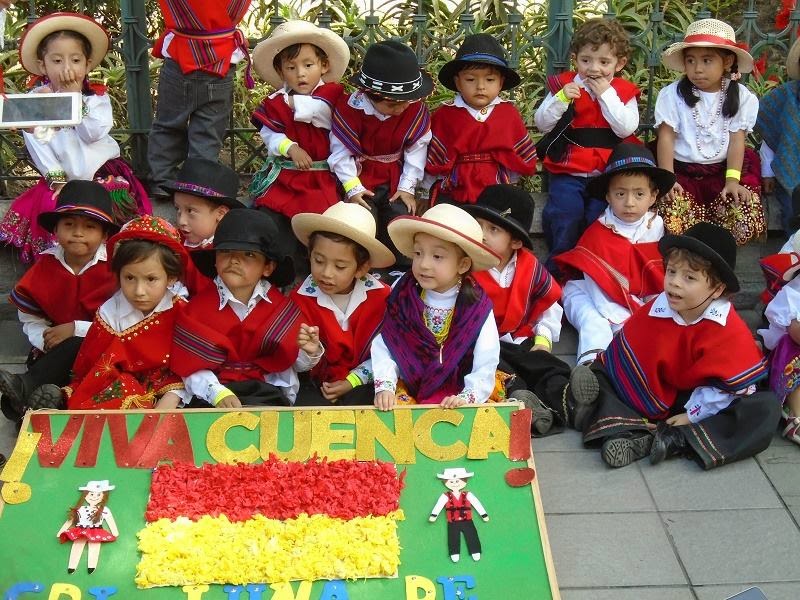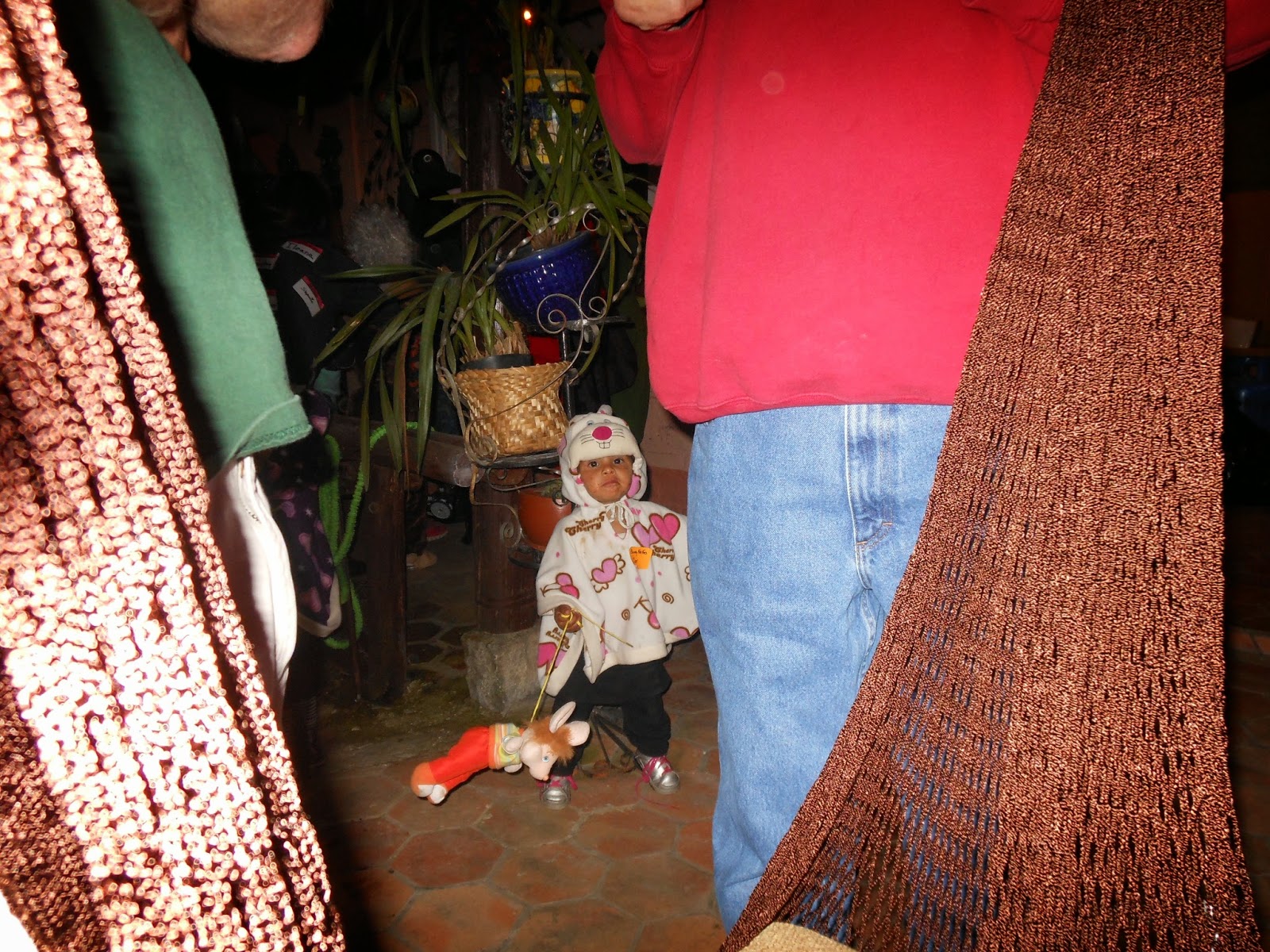Carnaval is celebrated from Friday until Tuesday before Ash
Wednesday. No buses, few taxi's, most stores and banks closed.
Big celebration here in Cuenca!
THE HISTORY OF CARNAVAL
AND
THE BEST CARNIVALS
IN ECUADOR
In Ecuador the most representative carnivals take place in Guaranda and in Ambato, the Flowers and Fruits carnival. It should be emphasized that throughout the inter-Andean area the cañari carnival is celebrated, there’s always a mythical character called the “Tayta Carnaval“, which is the master of the festival. Carnivals that gained a boost are the ones of Azuay, Gualaceo and Paute cantons which are organized around the riverbanks of Santa Barbara and Paute, also they draw the attention of a large number of domestic and foreign tourists.
In Ecuador due to its high indigenous population in the sierra, carnivals are celebrated with water, carnival foam, talcum powder or cornstarch to paint their faces or any type of paint plant type. Moreover is characterized by cheerfulness, music, dancing and parades with masks. The euphoria for wetting family and friends comes over all people during Carnival, to the point that it becomes a light latent danger. Hence, efforts to transform this party have been constant and systematic.
It is said that the roots of Ecuadorian Carnival are linked to the end of the solar year, an indigenous feast, or Paucar Huatay, one of the four largest of the year. In other words, Carnival is the culmination of the agricultural cycle and the opening of another. In the Andean region, for example, is a community festival that strengthens the sense of organization. The Carnival of the mestizos, in contrast with indigenous rituals, ends with the beginning of Lent.
While in the city there is a devotion to the Child Jesus and masses multiply on the eve of Carnival,, besides singing the songs and play with dust and water is conserved.
Despite everything, Carnival has the power to bring people together. It does this through three common elements: food, water and couplets.
THE WATER PURIFIES
Water usage appears from Mexico to Chile. Furthermore, in the Andean cultures water is life, the blood of the earth. Then, play carnival, without exaggeration, has a sense of approaching the opposite sex, especially in adolescence. And that is projected to affirm the temperament, the image of man-woman-family.
For one example: in Cacha (Chimborazo) youths gather and ask permission to the elders of the community to come out and play carnival. Start a procession in search of unmarried; in chaquiñanes the drum, the rondin or the garrocha are played … Then comes the drink.

THE FOOD IS ESSENTIAL
During the festival food is a must and generosity is everywhere. No surprisingly it is a ceremony to restore community ties.
In some villages in the mountains is customary to make the Jucho (a special drink “colada” made of cornstarch or cornmeal, capulí, pepper and cinnamon) and sweet figs with black grated panela.
Main dishes are usually, fritada with corn and ripe bananas, guinea pigs or rabbits with potatoes and peanut sauce or pepa de sambo, the stew with the sacrifice of pigs.
While in the villages of the Costa the dishes are made with fish (encocado, for example).
THE COPLAS AND THE HUMOR
The speech of the songs can feel a sense of belonging to their place of origin, through an emotional relationship that largely has been affirmed from Carnival.
Then, while singing the coplas the carnavaleros develop a distinct and particular way of telling the story of the community. This establishes a double opposition between orality and writing as well as between the official and the carnival (popular).

THE CARNIVAL IN ECUADOR
But the most famous, prestigious and famous Carnaval is the Carnival of Guaranda which takes place in the capital of the Bolivar Province, located 4 hours from Quito, rich in traditions reflects the syncretism between the religious and the indigenous.In the so-called “Desfile de la Alegría”, where thousands of peasants occupy the central streets of Guaranda, the groups evoke the “Taita Carnaval” (Father Carnival in Quechua language), which is the main character of the festival and who personifies the junction between the Spanish and indigenous culture while on the edge of the streets thousands of tourists applaud the parades, whom often offer visitors the traditional “pájaro azul” a hard liquor emerged from the distillation of a boiled cane,hen, orange leaves and various herbs, some of them secret among farmers who produce it.
The carnavaleros in Guaranda also play the traditional water game where each other is wet, again and again, and then heated with dancing and liquor. However, water play has been tried to reduce by the authorities to not waste so much water, and instead carnival foams are encouraged to be used.Some Ecuadorian historians claim that the traditional use of water comes from colonial times when the Spaniards encouraged indigenous slaves to purify their bodies, although with the passing of time it was turned into a game involving everyone.Another important carnival in Ecuador is held in the city of Ambato, called the land of the three Juanes: Juan Montalvo, Juan León Mera and Juan Benigno Vela. It is a celebration that unlike the rest of Ecuador where the festivities of the Carnivals have a uniqueness and peculiarity, because the traditional game with water and carnival foam has been changed for alternatives with much colour and joy, as parades with floats, artistic performances, fireworks, fairs offering traditional dishes, craft shows, serenades, crowning of queens, bullfights, theatre shows, etc. Year after year, the intensity of the party is increasing, several elements have been incorporated and an outpouring of joy and healthy entertainment is easily permeated over ambateños and tourists.

The acculturation of the carnival is a success that has allowed the party to acquire greater significance as well as the Festival of Folklore and Bullfighting make the Feast of ambateños an important reference in the tourist visit to South America. The festival is a manifestation of culture and fun that year after year brings thousands of tourists to Ecuador.
Ambato offers visitors beautiful places with beautiful landscapes, places of tradition, culture and several programs organized by the districts and institutions of the city.
Although similar festivities take place in every corner of the country. In the Chota Valley in the province of Imbabura, in the northern Andes, home to one of the largest black communities in the country, the carnival is celebrated with “Bomba,” a rhythm and dance that collects inhabitants African traditions.
There are also carnival celebrations in other Andean cities like Quito, Machachi, Riobamba, Loja and Azuay Province; as well as in the Amazon Provinces of Puyo and Macas.
In almost all towns and cities of Ecuador the water game is practiced but with less intensity than in previous years because what is intended is enculturate this game and provide alternative entertainment, although many Ecuadorians take advantage of the bank holidays to go to the heavenly beaches in the Ecuadorian coast where besides of the celebration of water, foam and balloons; cultural celebrations are held in the area like the case of Esmeraldas where international festivals from African American cultures are performed in places like “La calle 8″ and the Balneario Las Palmas. In Guayaquil, the largest and most populous city in Ecuador, known as the “Pearl of the Pacific” is performed since 2008, the Carnival of Guayaquil, thanks to the initiative of the Most Illustrious Municipality has promoted a culture festival. Various activities involving children, youth and adults, have accomplished this event to constitute a tourist and cultural event of major nationwide. Art shows, parades with floats, comparsas and other activities, have made the image of a carnival game with water, ink, flour and oil to end vanishing with the pouring of water…










